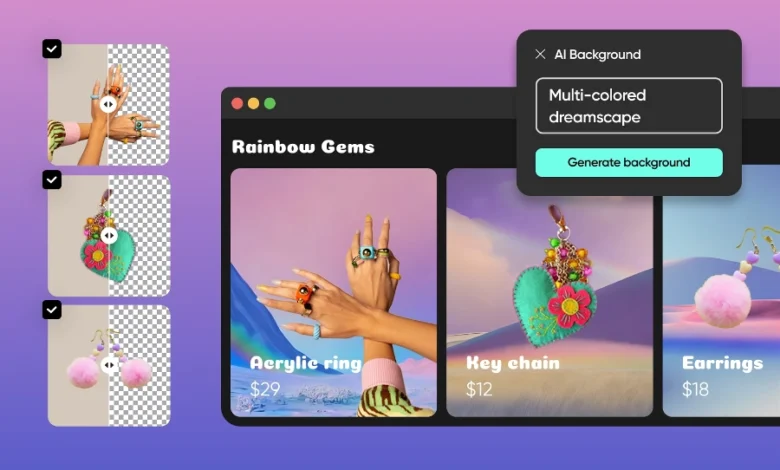Image Editing API: Transforming Visual Content with Advanced Automation

In today’s fast-paced digital world, visuals play a central role in communication, marketing, and entertainment. The rise of social media, e-commerce, and online content creation has led to an overwhelming demand for tools that can manipulate and enhance images effortlessly. Traditional image editing software, such as Photoshop or GIMP, requires a significant learning curve and human intervention. In contrast, the Image Editing API (Application Programming Interface) has revolutionized the way images are processed, making it accessible for developers and businesses to automate and integrate image editing features into their applications, websites, and services without requiring specialized knowledge of design or software.
An Image Editing API is a powerful and versatile tool that allows developers to incorporate image manipulation functions into their web and mobile applications. With this API, users can automate tasks such as resizing, cropping, rotating, applying filters, removing backgrounds, enhancing quality, and adding watermarks, all in real-time and without the need for manual intervention. By leveraging cloud-based technology, these APIs provide a scalable solution for businesses of all sizes to offer a seamless image editing experience, allowing users to enhance their images without leaving the platform.
This article will explore the significance of Image Editing APIs, their functionalities, use cases, and how businesses can benefit from incorporating these APIs into their workflow.
What is an Image Editing API?
An Image Editing API is a cloud-based service or platform that offers an interface for developers to interact with and manipulate images programmatically. Instead of manually using an image editing software or application, developers can integrate these APIs into their apps, websites, or systems to automate the image editing process. The API can be used for a wide variety of purposes, from simple tasks like resizing and cropping to more complex processes like background removal, facial recognition, and image enhancement.
These APIs typically provide developers with access to a range of image manipulation features through HTTP requests. For instance, developers can send a request to the API to crop an image, apply a filter, or compress it, and the API responds with the edited image. Image Editing APIs often use machine learning (ML) and artificial intelligence (AI) technologies to perform more sophisticated tasks like object recognition, background removal, and enhancing image quality.
Key Features and Functions of Image Editing APIs
Basic Image Manipulation: The core functionality of an Image Editing API revolves around basic image manipulation, such as resizing, cropping, rotating, and flipping images. These are fundamental tasks needed for preparing images to meet certain specifications, like those required for social media posts or e-commerce platforms.
Image Filters and Effects: Many Image Editing APIs provide filters and effects that can be applied to images to give them a unique style. These filters can range from simple adjustments, such as brightness, contrast, saturation, and sharpness, to more complex artistic filters that mimic photography styles or artistic renderings.
Image Enhancements: Image enhancement functions are particularly useful for improving the visual appeal of photos, especially when dealing with low-quality images. These enhancements might include noise reduction, color correction, and the automatic sharpening of details. Many Image Editing APIs also include algorithms designed to upscale images without losing quality.
Background Removal and Transparency: One of the most popular uses of an Image Editing API is to remove or replace backgrounds. This feature is widely used by e-commerce websites, where product photos are often isolated from their backgrounds to be placed on white or transparent backgrounds. APIs utilize AI to distinguish between the object and the background, making it easier to remove or replace backgrounds automatically.
Watermarking and Branding: For businesses that need to protect their intellectual property or add branding to images, an Image Editing API can help automate the process of adding watermarks or logos to images. This can be done programmatically, and the watermark can be customized with different transparency levels, positioning, and sizes.
Text and Annotation: Many Image Editing APIs allow for adding text, annotations, or labels to images. This is useful for social media platforms or marketing tools where users want to overlay captions, titles, or other textual information over their photos. APIs offer flexibility in font styles, colors, sizes, and positioning of the text.
Compression and Optimization: Image optimization is crucial for improving load times, especially on websites and mobile apps. Image Editing APIs provide functions that automatically compress images without significantly reducing quality. This feature is particularly beneficial for web developers and content managers who need to optimize image files for faster page load times and improved user experience.
Face Detection and Editing: Face detection is a significant feature found in advanced Image Editing APIs, powered by machine learning. This function can detect faces within images and apply specific edits to them. For example, it can be used to blur faces for privacy, remove blemishes, or enhance facial features automatically.
Collage and Layout Creation: Some Image Editing APIs also allow for creating image collages or arranging multiple images in a specific layout. This is particularly useful for social media platforms, bloggers, and marketers who wish to showcase multiple products or images in a single composition.
Customizable API Integrations: Image Editing APIs are highly customizable, allowing businesses to tailor the functionality to their specific needs. Whether it’s for creating branded experiences, automating a workflow, or integrating image editing with other software systems, the APIs provide developers with a high level of flexibility and control.
Benefits of Using Image Editing APIs
Cost and Time Efficiency: Image Editing APIs eliminate the need for developers or designers to manually edit images. With API integrations, image editing can be automated in real-time, allowing businesses to save time and resources while improving productivity. By outsourcing image processing to an API, companies can avoid the cost of purchasing and maintaining expensive image editing software.
Scalability: Businesses that need to process large numbers of images regularly can benefit from the scalability of Image Editing APIs. Cloud-based APIs can handle a high volume of requests, making it easier for businesses to scale their operations without worrying about performance issues or server limitations. This is especially important for e-commerce platforms, digital marketers, and social media managers who need to edit and process images in bulk.
Improved User Experience: Integrating an Image Editing API into a website or app can improve the overall user experience by offering instant, real-time image editing features. For instance, users can upload their photos, apply filters, resize images, or remove backgrounds with just a few clicks. This streamlines the process and allows users to make changes without leaving the platform.
Flexibility and Customization: The ability to customize image editing workflows through an API gives developers full control over how the image manipulation functions are implemented. Whether it’s creating a branded experience or adding specific features, the API allows developers to fine-tune the image editing capabilities to suit the needs of their users or business.
Automation of Repetitive Tasks: For businesses that deal with repetitive image editing tasks, such as cropping, resizing, or watermarking, an Image Editing API offers a means of automating these actions. This reduces the workload on human resources and ensures consistency across large numbers of images.
AI and ML Integration: Image Editing APIs are increasingly integrating artificial intelligence (AI) and machine learning (ML) models to enhance the accuracy and efficiency of image processing. Tasks such as background removal, object detection, facial recognition, and image enhancement are powered by these advanced technologies, ensuring high-quality results.
Use Cases of Image Editing APIs
E-commerce: E-commerce platforms rely heavily on product images to drive sales, and an Image Editing API can help businesses automatically edit product photos. This includes removing backgrounds, optimizing images, and adding watermarks for branding. With an API, businesses can ensure that all images meet consistent standards for their online store.
Social Media Platforms: Social media apps and websites can incorporate image editing capabilities directly into their platform. By allowing users to apply filters, resize photos, add text, and remove backgrounds, social media platforms can offer a richer, more interactive experience for users. This is particularly important for user-generated content, where quick edits are often needed.
Photo Editing Apps: Developers of photo editing applications can enhance their offering by integrating a powerful Image Editing API. This can include advanced features such as retouching, applying effects, creating collages, or even generating artistic renditions of images.
Marketing and Advertising: Digital marketers often work with large volumes of images for their campaigns. An Image Editing API allows them to automatically adjust images for different platforms, ensuring they are optimized for web, mobile, and print. This saves time and ensures consistency in ad creatives.
Real Estate: In the real estate industry, image editing is vital for showcasing properties in the best light. An Image Editing API can help agents automatically enhance property images, remove unwanted elements, and ensure images are optimized for listing platforms.
Photography: Professional photographers can use Image Editing APIs to automate the editing process for large volumes of photos. With AI-enhanced tools, photographers can improve image quality, add filters, and apply effects more efficiently than manual editing.
Conclusion
The Image Editing API is a transformative tool for businesses looking to streamline image processing and automate time-consuming tasks. By integrating an Image Editing API, companies can significantly reduce the effort and time required to manipulate and optimize images, offering seamless user experiences and ensuring consistency in visual content across various platforms. The range of features, from basic image manipulation to advanced AI-driven enhancements, makes these APIs essential for a variety of industries, including e-commerce, social media, photography, marketing, and more.
Incorporating an Image Editing API is no longer just an option for tech-savvy businesses but a necessity for anyone who needs to manage and edit images at scale. With the rapid advancement of technology, these APIs are expected to evolve, offering even more innovative features and seamless integrations, making the future of image editing more efficient and accessible than ever before.





